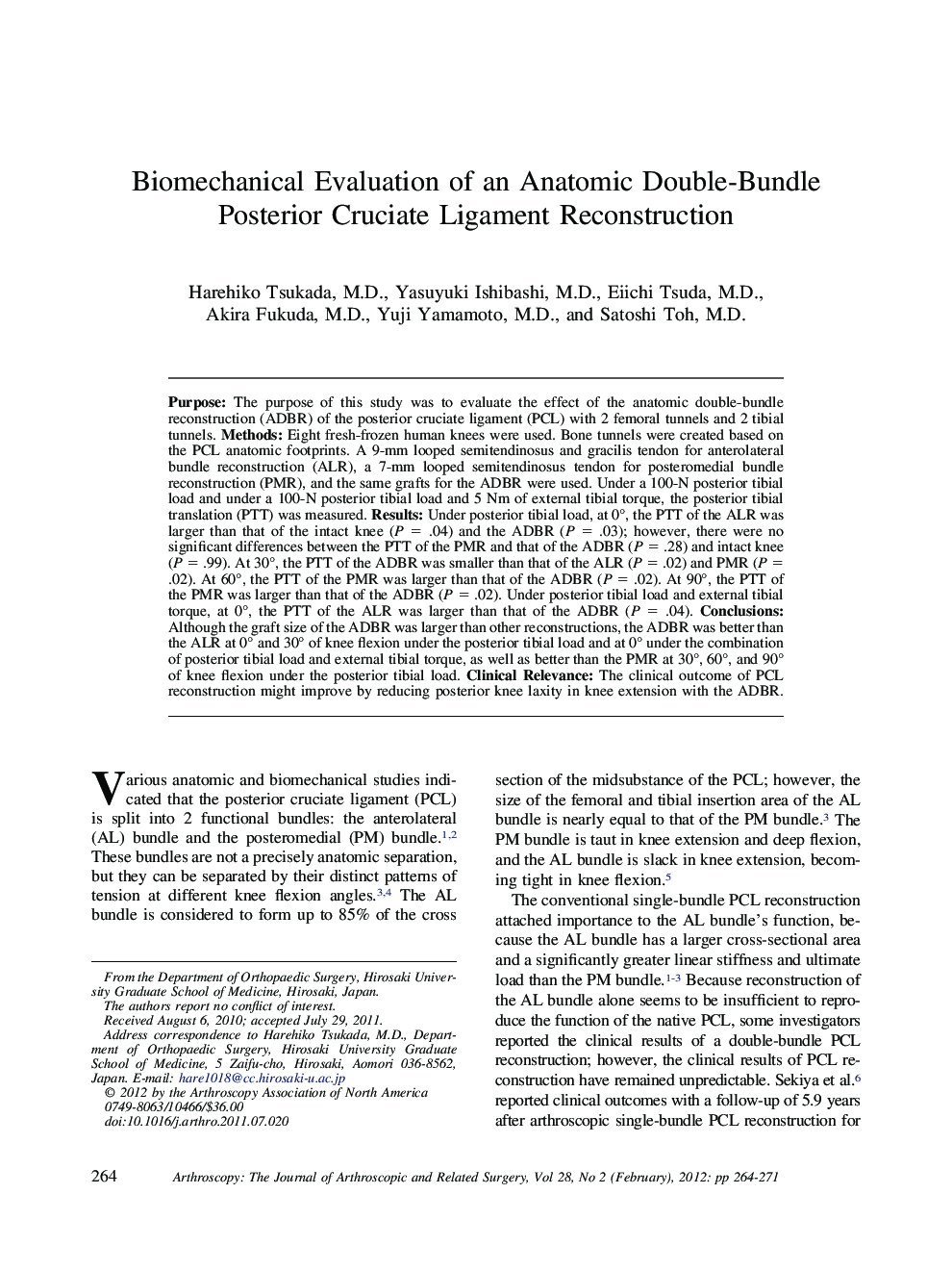| کد مقاله | کد نشریه | سال انتشار | مقاله انگلیسی | نسخه تمام متن |
|---|---|---|---|---|
| 4044996 | 1603532 | 2012 | 8 صفحه PDF | دانلود رایگان |

PurposeThe purpose of this study was to evaluate the effect of the anatomic double-bundle reconstruction (ADBR) of the posterior cruciate ligament (PCL) with 2 femoral tunnels and 2 tibial tunnels.MethodsEight fresh-frozen human knees were used. Bone tunnels were created based on the PCL anatomic footprints. A 9-mm looped semitendinosus and gracilis tendon for anterolateral bundle reconstruction (ALR), a 7-mm looped semitendinosus tendon for posteromedial bundle reconstruction (PMR), and the same grafts for the ADBR were used. Under a 100-N posterior tibial load and under a 100-N posterior tibial load and 5 Nm of external tibial torque, the posterior tibial translation (PTT) was measured.ResultsUnder posterior tibial load, at 0°, the PTT of the ALR was larger than that of the intact knee (P = .04) and the ADBR (P = .03); however, there were no significant differences between the PTT of the PMR and that of the ADBR (P = .28) and intact knee (P = .99). At 30°, the PTT of the ADBR was smaller than that of the ALR (P = .02) and PMR (P = .02). At 60°, the PTT of the PMR was larger than that of the ADBR (P = .02). At 90°, the PTT of the PMR was larger than that of the ADBR (P = .02). Under posterior tibial load and external tibial torque, at 0°, the PTT of the ALR was larger than that of the ADBR (P = .04).ConclusionsAlthough the graft size of the ADBR was larger than other reconstructions, the ADBR was better than the ALR at 0° and 30° of knee flexion under the posterior tibial load and at 0° under the combination of posterior tibial load and external tibial torque, as well as better than the PMR at 30°, 60°, and 90° of knee flexion under the posterior tibial load.Clinical RelevanceThe clinical outcome of PCL reconstruction might improve by reducing posterior knee laxity in knee extension with the ADBR.
Journal: Arthroscopy: The Journal of Arthroscopic & Related Surgery - Volume 28, Issue 2, February 2012, Pages 264–271